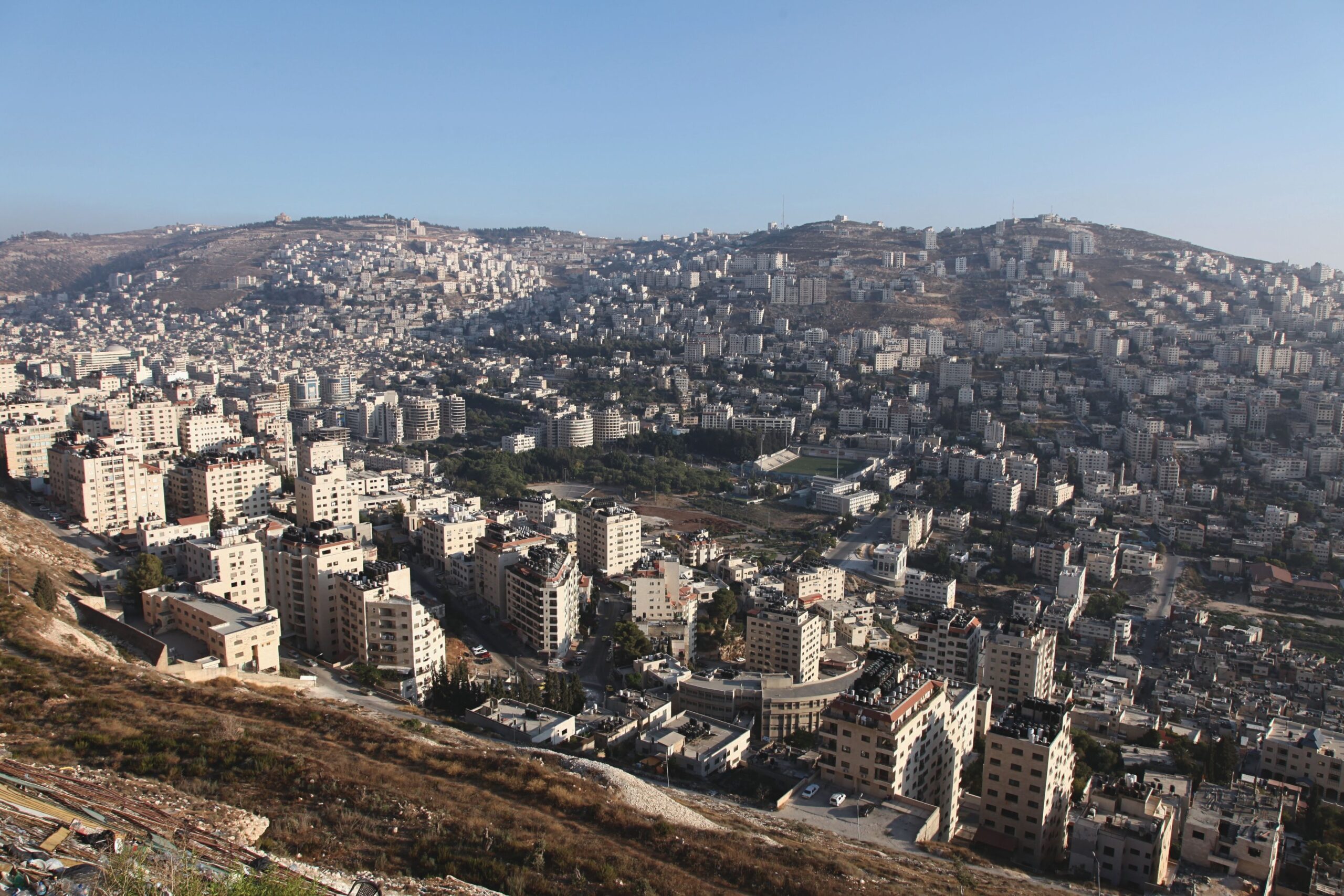
- Close
29/05/2024 | Nablus
Palestinian Apartment residents: Pioneers of Urban Evolution

Last year’s Turkey-Syria earthquake sent strong waves through the Levant region. Citizens of Palestine, especially residents of high-rise buildings in Nablus, felt these tremors, with many households evacuating fearing an aftershock. As a result, these worries continued for several weeks with many questioning whether their buildings could withstand a similar shaking, knowing they are not compliant with seismic building codes. The dense urban fabric, complex topography, and lack of control over land put authorities on high alert. For many, this event highlighted the potential loss of property and memories, serving as a stark reminder of the ongoing threat posed by earthquakes.
Who are the residents of apartment buildings and why are they important?
Care, interest, and responsibility were the key motives driving the involvement of the apartment building residents. Their insights stemmed from a genuine desire to contribute to the project and a keen interest in understanding its potential impact on their living environment. With 89% of households in Nablus city residing in residential blocks, their participation was crucial in forming a comprehensive understanding of Palestinians’ daily challenges and aspirations. Throughout the constructive process of the TCDSE, participants gradually moved towards a more professional and practical interpretation of their vision.

The Center for Urban Planning and Disaster Risk Reduction at An-Najah National University held the Risk Agreement workshop, the fourth work package of the Tomorrow’s Cities TCDSE framework, which began its activities in Nablus in May 2023. The workshop is part of the ongoing community engagement and participatory planning of the TCDSE process. It involved community representatives, including youth, women, low-income residents, residents of high-rise buildings, and civil society institutions.
Authentic Contribution to Future Livability
On the first day, participants used an interactive dashboard to explore their visioning scenarios and the expected impacts of various events, including earthquakes, floods, and landslides. They began by investigating areas prone to inundation, identifying the most affected income groups and the physical characteristics of buildings and infrastructure that increase vulnerability. After this step, the impact metrics were revealed, allowing participants to pinpoint areas with the highest risk on the map and analyze each impact metric and the likely causes of these impacts. Participants were excited to see the implications of their decisions through the proposed urban plans and policies reflected on the interactive dashboard.
Upon reviewing and discussing the impacts, participants suggested reforms and proposed three main actions:
- Redistribution of land uses and relocation of critical facilities (land-use policy)
- Application of construction regulations and seismic building codes
- Application of resilience standards for critical infrastructure, including road and power networks
On the second day of the workshop, participants discussed the challenges associated with implementing these actions:
- Challenges associated with Action 1: Land ownership and high prices, weak social and public awareness, weak enforcement mechanisms, and the absence of a penal system.
- Challenges associated with Action 2: Inefficient implementation mechanisms, lack of public awareness about actual costs, and a shortage of technical personnel.
- Challenges associated with Action 3: All of the challenges addressed in the actions above, particularly in implementing resilient road infrastructure.
The group addressed the most critical challenges by preparing strategies that identify solutions, responsible stakeholders, and a time frame for implementing those solutions.
 The two-day workshop served as a bridge between the previous and upcoming stages of the project. In the opening session, Dr. Jamal Dabeek and Dr. Karim Al-Jawhari presented a summary of the workshop’s aims and accomplishments, highlighting the successful completion of the Impact and Hazard Modelling component of the TCDSE and the outcomes of the stakeholder engagement meetings. Using illustrative examples, Prof. Jalal introduced key disaster risk reduction strategies and explained essential risk terminologies such as exposure, vulnerability, hazard, and risk.
The two-day workshop served as a bridge between the previous and upcoming stages of the project. In the opening session, Dr. Jamal Dabeek and Dr. Karim Al-Jawhari presented a summary of the workshop’s aims and accomplishments, highlighting the successful completion of the Impact and Hazard Modelling component of the TCDSE and the outcomes of the stakeholder engagement meetings. Using illustrative examples, Prof. Jalal introduced key disaster risk reduction strategies and explained essential risk terminologies such as exposure, vulnerability, hazard, and risk.
The reality of apartment buildings in Nablus City requires thorough reflection. The series of community engagement workshops within the TCDSE framework represents a roadmap for re-envisioning building conditions, including their density, quality, and random placement. Appropriate policies and regulations are being structured based on a bottom-up strategy informed by the experiences of apartment building residents.



